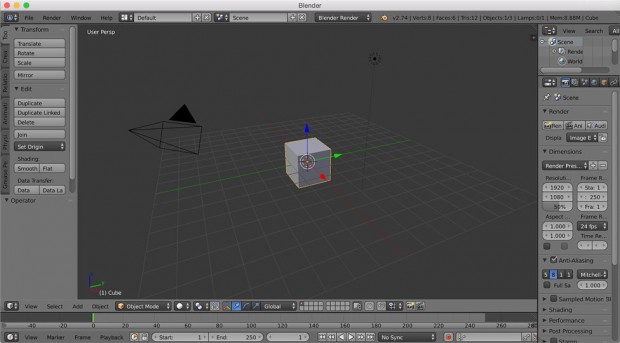- Restoration of Defocused and Blurry Images — impressive demos, and open source (GPLv3) code. All those blurred faces and documents no longer seem so safe.
- Peter Molyneux Profile in Wired — worth reading for: (a) Molyneux’s contribution to the genre; (b) the inspiration he drew from his satirical Twitter mirror (@PeterMolydeux) is lovely, and (c) the game jams to build the fake Molyneux games, where satire becomes reality. (via Andy Baio)
- Trusted Computing for Industrial Control Systems — Kaspersky reveals plans for an open source O/S for industrial control systems, so reactors and power stations and traffic systems aren’t vulnerable to StuxNet-type attacks. (via Jim Stogdill)
- Android Virtual Machines — faster emulation for testing than the traditional simulators.
"game design" entries

A developer’s introduction to 3D animation and Blender
An overview of the 3D animation process using Blender.

Creating 3D animations is like writing software. Both processes require
knowing certain industry terms. Some animation terms are:
- Modeling
- Texturing
- Rigging
- Setting up the scene with cameras, lights, and other effects
- Animating
- Rendering
Let’s define each of these, and then we’ll dig into some code with Blender’s API.
Modeling is the process of creating 3D models. One way is to represent the 3D model as points in 3D space. Each point, or vertex, has 3 coordinates: an X, an Y, and a Z coordinate, to define its location in 3D space. A pair of vertices can be connected by an edge, and edges bound polygons called faces. These faces define the surface of the model. Modeling is all about creating these sets of vertices, edges, and faces.

To create a model, we usually start with a primitive shape (like a sphere or a cube) and reshape it into what we’d like. Individual vertices, edges, and faces can be repositioned. New vertices, edges, and faces can be added to the basic model through simple operations. Two common ones are extrusion and subdivision.


Four short links: 24 October 2012
Deblurring Images, Games Design, Secure Control, and Faster Emulation

A gaming revolution, minus the hype
John Ferrara on game design's role in solving real-world problems.
"Playful Design" author John Ferrara discusses gaming's place in cultural transformation, and he offers five universal principles of good game design.

Gamification has issues, but they aren't the ones everyone focuses on
Gamification expert Gabe Zichermann on three areas that deserve meaningful attention.
Much of the criticism of gamification focuses on definitions and secondary concerns. Gamification expert Gabe Zichermann says attention should be paid to three different issues: over-justification, total cost of ownership, and addiction/compulsion.

The purpose of gamification
A look at gamification's applications and limitations.
Gamification is inspiring debate and raising important questions: play vs. work, intrinsic vs. extrinsic motivation, authenticity vs. contrivance, just to name a few.